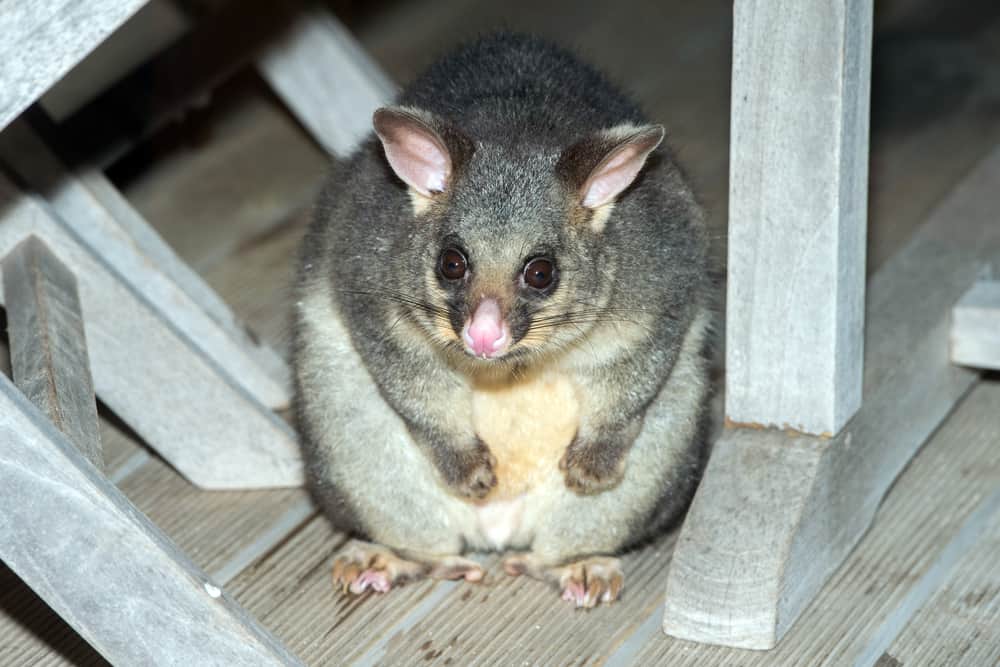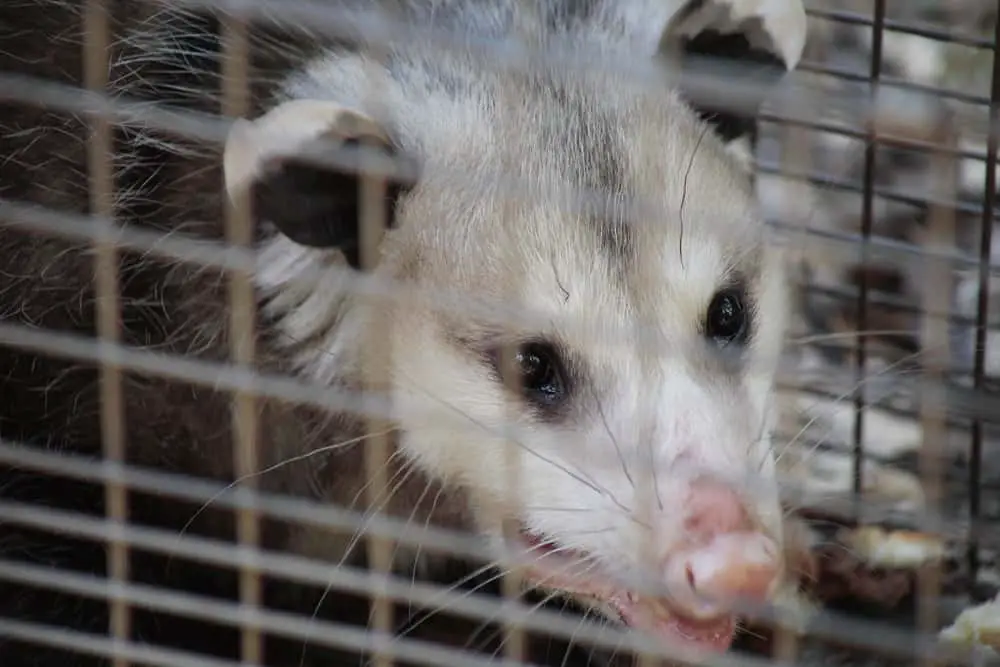Attics are great for storage and can make a nice nook or study if finished. But if your attic has entry holes like gaps or voids, then it is entirely possible for an opossum to move in. Crawl spaces, underneath sheds, and attics are opossums’ favorite shelters.
Possums are generally not aggressive or dangerous but can cause damage to attic insulation, leave bad odors, and make unpleasant noises if allowed to move in. Because they are nocturnal animals, it can be difficult to see where they are unless you stay up all night with a flashlight.
How to Remove an Opossum from an Attic?
Possums are animals that love safe, dry dens where they can raise a family. They eat anything they can get and are smart enough to cause a real mess while sniffing out food. Opossums can’t see or hear well, but their sense of smell leads them to shelter, food, and water.
If a possum has climbed up your house and moved into your attic, you are going to want to remove it. Opossums serve a vital part of the ecosystem and because they are non-aggressive, the preferred way to remove these marsupials is with a live trap.
The process of trapping a possum is as follows:
1. Cleaning Up the Attic Space
Cluttered and messy attics give possums plenty of material they need to build dens and hide securely. Before trying to catch an opossum, it is important to figure out how the possum got in and how it moves about the attic.
By cleaning up and organizing, you can discover signs of possums and indicators of where it sleeps and where it searches for food. If there is a family of possums, there will be lots of signs that they are there.
2. Removing Food Sources
If there are any food sources in or around the attic, you will need to remove them. All outside trash cans need to be fitted with tight lids. All garbage cans without lids should be brought into a garage if possible. Pet food should be brought in at night, and all compost and food scraps should be surrounded with wire mesh. Without pet food and other dining options, the opossum will only have the bait in the trap to eat.
3. Sealing Gaps and Holes
Once you know where the adult opossum or possible mother opossum’s den is, you can seal up the entry points they used to get inside. Make sure you leave a way for the possum to get from the den to the trap, or you may inadvertently kill it and have to deal with a decomposing opossum in the walls. Sealing extra gaps will cause the possum to investigate the trap faster.
4. Setting Up the Live Trap
Possums are strong, and the traps aren’t very heavy. Once the path of a possum is determined, place the trap along it and weigh it down with a stone, brick, or exercise weight. This will help keep the trap stable and prevent damage to the attic and injury to a trapped possum when the door first shuts.
5. Placing the Bait in the Live Trap
Baiting a live trap with an opossum’s favorite snack is the best way to ensure success. They love sweets, and the best baits I’ve found are a mashed-up banana or an unwrapped honey bun. Either of these sweets will drive a possum wild and lead them right into your humane trap. Place the food bait at the far end of the trap from the opening to guarantee the possum steps on the pressure plates that slam the door.
6. Catching the Possum
Check the trap every morning and evening until the possum is caught. If there are no results after a few days, try moving the trap or using a different bait. Make sure it really is a possum you have in your attic and not a rodent or a similarly sneaky mammal.
7. Removing the Possum
Once the possum has been trapped, you can contact your local animal control to determine how and where to safely and legally release your uninvited guest. When the possum is free, you can clean the cage thoroughly and store it safely.
8. Preventing New Possums
Opossum deterrents and repellents can be used to make crawl spaces and attics undesirable. The odors will move a possum along and spare you the steps above. Proper maintenance of your attic, walls, floors, and roof will help keep pest problems to a minimum. Bright lights on sensors can also help keep wild animals from entering your yard at night.
Signs You Have a Possum Problem

Even though possums only come out at night, they leave plenty of evidence if these climbers have made their way to your attic. In Winter or summer, you can find signs that an opossum infestation has occurred. Look for these signs to determine if an opossum removal is necessary.
| Sign | Likelihood of Possom Problem | What to Do |
| Scratches near windows and other entry points | Possible opossum infestation but could be many other rodents or mammals | Check for more signs of opossum infestation and seal openings |
| Removed or soiled attic insulation | Attic insulation was strewn about, and some are stained bad smelling with a noxious odor that is very likely an opossum | Clean up insulation and set a live bait trap for possums |
| Scratching Noises and Verbal Noises | Female Opossums and angry opossums make loud noises. If screeching, hissing, and scratching noises are being heard at night, it is likely a possum | Place a possum live trap near where noises are coming from and fill it with bait. |
| New Unpleasant odors | Smells coming from walls or behind storage piles could mean possums or other rodents | Look for droppings and dens to verify if it is a possum or other rodent infestation |
What Makes a Possom Move into an Attic?
Opossums are a common element of wildlife that have adapted to humans and have a habit of moving into our structures. They are only looking for a warm place to live and raise their families but can cause serious problems inside of attics. There are a few things that can encourage an opossum to move in. These are:
- Food Sources – The number one thing that will bring a possum to your attic is a source of food. It is very likely that easy access to something sweet caught the possum’s attention. Once a nice dry place was found near the food, they moved in, and now you have to kick them out.
- Clutter and Mess – If you consider that a possum’s natural habitat is a forest, you can see how the rafters and clutter of an attic would appeal to them. If they find a warm, dry place to live in the clutter, they will burrow down and enjoy the shelter.
- Easy Access – Possums want to be able to easily get into and out of their den. If getting to your attic is easy for an opossum, it will be more likely to call your house home. The tighter you seal your attic and the more attention you pay to exterior damages, the less likely you are to have to deal with a possum infestation
- No Predators – Although possums are large, they are not hunters like predators are. A dog or a cat on the property, especially one that marks its territory frequently, can deter opossums. Without predators on your property, possums will feel safe lounging around at night.


